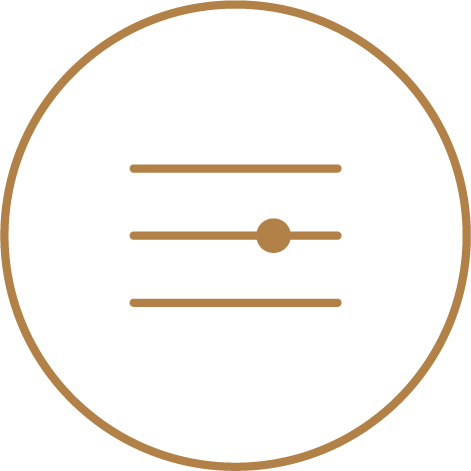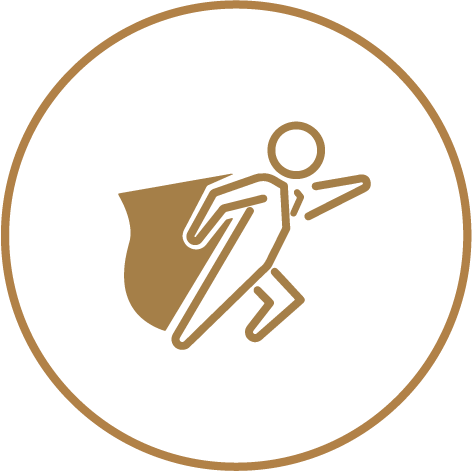
Screen Printing Workshop
A three-session screen-printing workshop designed to help learners uncover misconceptions about creativity and build confidence through hands-on making. This teaching plan focuses on designing a progressive curriculum that combines psychology and creative practice, showing how structured activities can transform self-perceptions of creativity.
Design Thinking
Pedagogy
Creative Confidence
Interdisciplinary
Misconceptions about Creativity

Many students carry limiting beliefs about creativity:
-
Logical and detail-oriented individuals are often assumed to lack creativity.
-
Creativity is seen as an innate talent rather than a skill that can be learned and strengthened.
-
Perfectionism and fear of failure hold people back from trying new ideas.
These misconceptions lead to a lack of confidence and discourage people from engaging in creative activities, even when they have the potential to thrive.
Learner Persona

This workshop was designed with learners like Min in mind: adults who admire creativity but doubt their own abilities.

Lesson Description
Designer Name
Lesson Title
Lesson Duration
Learner Characteristics
Instructional Modality
Siyu Fang
Screen Printing Workshop (Elective)
3, 60-minute lessons
Learners may not have an accurate self-awareness of creativity.
Learners lack knowledge about how to improve their creative abilities.
Face-to-face and project-based active learning.
Guiding Questions
01
What do you consider
creativity to be?
02
How do you feel about
your creative abilities?
Big Idea
Everyone has Creativity
Learning Outcome
01
Students will be able to uncover their misconceptions about creativity and gain a new understanding of it.
They will also have the capability to create a simple graphic within a short period of time.
02
Students will be able to confront their misconceptions about creativity and emerge with increased confidence in their creative abilities.
They will also have the capability to create a graphic slightly more intricate.
03
Students will be able to envision and articulate the emotional tone of their designs through the use of color.
They will also have the capability to create and refine the multi-colored pattern and conduct screen printing in a professional manner.
Assessment
01
Students will create a simple pattern with “bridge” and print it using screen printing.
02
Students will grasp the relationship between outlines and fill content and create a new pattern slightly more intricate. (Single color)
03
Students will master the essential points for successful screen printing and produce multi-colored pattern through screen printing.
Cognitive Activities
01
-
Creative ice breaker
-
Defining Creativity
-
Rate your creativity
-
Screen printing introduction
-
Design sprint
02
-
Rate your creativity
-
Video lesson to introduce creative self-efficacy (With several examples, such as Individuals with ADHD can become exceptional dancers.)
-
Peer design critique with your “barriers to creativity” (unique hidden assets).
-
Design iteration and production
03
-
Rate your creativity and creative self-efficacy
-
Video lesson to introduce color theory
-
Discussion: Share your design tone
-
Lecture on advanced screen-printing technique
-
Design iteration and production
Affordance
01
These activities afford students an opportunity to rethink their misconceptions about creativity by realizing they can successfully design a small pattern within 10 minutes through hands-on experience.
02
These activities afford students to provide and get feedback from peers and instructors.
They also afford students a demonstration to combat misconceptions about creativity and significantly bolster their creative confidence by realizing that what's often seen as 'barriers to creativity' can actually transform into hidden assets for boosting their creative abilities.
03
These activities afford students to apply what they have learned about color to envision the emotional tone of their design.
At this point, they should have grown more confidence in their creative capacity to finish design work and discovered pleasure in crafting and producing items through the screen-printing process.
Agenda
01
In class:
Ice breaker (15 minutes)
-
Welcome and introductions.
-
Ask each student to share a creative activity they enjoy or admire.
Defining Creativity (10 minutes)
-
Discuss the concept of creativity, emphasizing that it's not limited to artistic abilities but can be found in various aspects of life.
-
Students score their own creativity in their notebooks.
Screen printing introduction (Lecture)
-
Provide a brief overview of the basics of screen printing and use the letter 'O' as an example to explain the concept of a 'bridge'.
Design Sprint (10 min)
-
Students will quickly sketch a simple pattern on parchment paper within 10 minutes.
(Tips: You can think about what you had for breakfast this morning? What gift would you like to give to someone you love? What do you have at home? What is your lucky number? Your favorite letter?)
-
Carve and print it on paper (This time only print with one color)
02
Before class:
-
Students score their own creativity after the first class in their notebooks. They should articulate their own definitions of creativity and share reflections on how their understanding has evolved before and after the first lesson.
-
Video lesson to introduce creative self-efficacy. (With several examples, such as Individuals with ADHD can become exceptional dancers.)
-
Video lesson to introduce outlines & fill content.
-
Students create a pattern on parchment paper for the next class (slightly more complex than the first one)
In class:
Peer design critique (20 minutes)
-
Students show their new pattern to peers and ask feedback on the suitability for screen printing (Using logical thinking skills to critically evaluate the precise usage of 'bridges').
-
Peers provide process/effort feedback and solutions to assist with refinement.
Design iteration and production
-
Refine the design, carve and print it on paper (This time only print with one color)
03
Before class:
-
Students score their own creativity and creative self-efficacy after the second class in their notebooks.
-
Video lesson to introduce color theory. Read articles about the theory of color emotions on Perusall, and actively engage by leaving comments and joining discussions.
-
Students create a new pattern for the next class. Requirements: The design consists of single-color outlines and two-color fill patterns, totaling three colors. (If you encounter difficulties during the design process, please discuss them with your peers or teacher on Slack.)
In class:
Discussion: Share your design tone (20 minutes)
-
Based on your design, visualize a particular atmosphere, weather, or personality, and have a discussion with your classmates about which colors you think can effectively express this emotion or ambiance.
-
Peers provide process/effort feedback and solutions to assist with refinement.
Advanced Screen-printing techniques (Lecture)
-
Explain and demonstrate advanced knowledge in screen printing techniques.
Design iteration and production
-
Refine the design and conduct screen printing in a professional manner.
Take away
-
Students score their own creativity and creative self-efficacy after this class in their notebooks.
-
Share personal changes, achievements, and course reflections in class.
Teaching Philosophy
01
Adaptability
When learning to unleash their creativity students need guidance that is tailored to their characteristics to help them fundamentally correct the negative learning and misconceptions about creativity.
02
keen Perception
Students may not accurately articulate their confusions, and it needs someone to identify their true needs through observation from different angles in order to help them make progress.
03
Turn Weaknesses into Strengths
When learning to identify and combat key misconceptions about creativity students need guidance to shift their perspective on their weaknesses and transforming them into an advantage to help unleash their creativity.
My teaching philosophy for cultivating creative confidence and creative self-efficacy centers around the key affordances of Adaptability, Keen Perception, and Turning Weaknesses into Strengths.
Adaptability: In my approach to teaching and learning, I recognize that each student possesses a unique set of characteristics and misconceptions about creativity. To effectively nurture their creative confidence, I adapt my guidance to their individual needs. By addressing their specific challenges and correcting negative beliefs, I aim to empower them on their creative journey.
Keen Perception: I understand that students may not always articulate their confusion accurately. To bridge this gap, I employ keen perception by observing them from various angles. This enables me to identify their true needs, even when they might not express them explicitly. This approach ensures that my guidance is finely tuned to their evolving requirements.
Turning Weaknesses into Strengths: When teaching students to confront and combat misconceptions about creativity, I believe in guiding them to shift their perspective on their weaknesses. Instead of viewing their shortcomings as obstacles, I encourage them to see these as opportunities for growth. By helping them transform weaknesses into strengths, I empower them to unlock their full creative potential.
My teaching philosophy is grounded in the belief that creativity can be nurtured through tailored guidance, perceptive observation, and the transformation of weaknesses into strengths. It is my purpose as an educator to create an environment where students can overcome barriers and discover the boundless possibilities within their creative selves.
Teaching Philosophy

Adaptability

Keen Perception

Turn Weaknesses into Strengths

Interest-Driven
My teaching philosophy for cultivating creative confidence and creative self-efficacy centers around the key affordances of Adaptability, Keen Perception and Turning Weaknesses into Strengths.
Adaptability: In my approach to teaching and learning, I recognize that each student possesses a unique set of characteristics and misconceptions about creativity. To effectively nurture their creative confidence, I adapt my guidance to their individual needs. By addressing their specific challenges and correcting negative beliefs, I aim to empower them on their creative journey.
Keen Perception: I understand that students may not always articulate their confusion accurately. To bridge this gap, I employ keen perception by observing them from various angles. This enables me to identify their true needs, even when they might not express them explicitly. This approach ensures that my guidance is finely tuned to their evolving requirements.
Turning Weaknesses into Strengths: When teaching students to confront and combat misconceptions about creativity, I believe in guiding them to shift their perspective on their weaknesses. Instead of viewing their shortcomings as obstacles, I encourage them to see these as opportunities for growth. By helping them transform weaknesses into strengths, I empower them to unlock their full creative potential.
My teaching philosophy is grounded in the belief that creativity can be nurtured through tailored guidance, perceptive observation, and the transformation of weaknesses into strengths. It is my purpose as an educator to create an environment where students can overcome barriers and discover the boundless possibilities within their creative selves.
Lesson Description
Designer Name
Lesson Title
Lesson Duration
Learner Characteristics
Instructional Modality
Siyu Fang
Screen Printing Workshop (Elective)
3, 60-minute lessons
Learners may not have an accurate self-awareness of creativity.
Learners lack knowledge about how to improve their creative abilities.
Face-to-face and project-based active learning.
